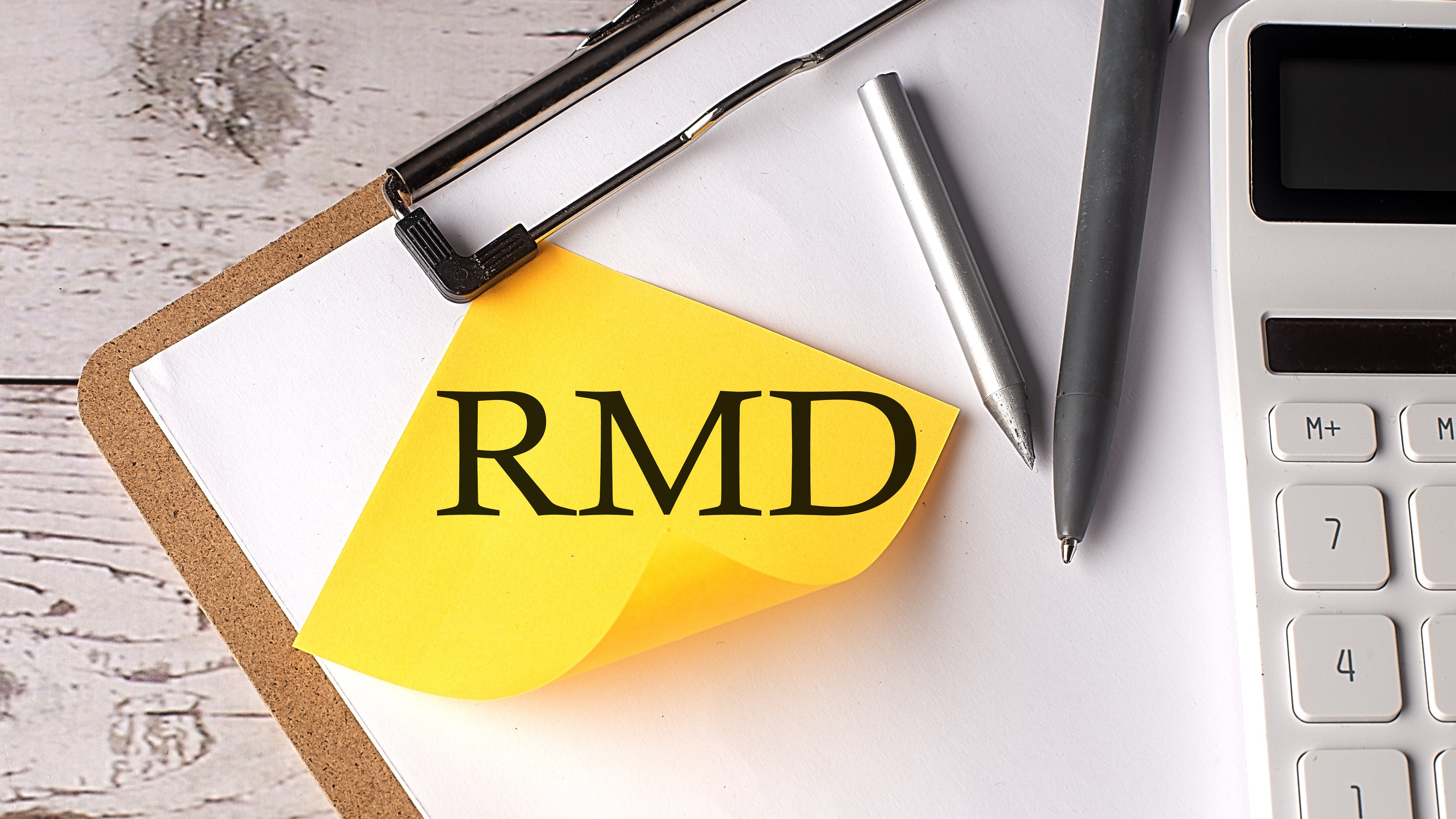How to Optimize Your RMDs in Retirement
No matter where you are in your financial journey, many options are available, including eliminating RMDs altogether through Roth conversions.


Required minimum distributions (RMDs), or the minimum amount you must withdraw from your pre-tax retirement accounts each year, are a key consideration for retirement planning. That said, the rules and ways you can, and should, leverage them have changed.
The old rule was you had to begin RMDs at 70½ years old. The SECURE Act updated the age for RMDs to 72. The SECURE 2.0 Act updated the age to 73. The raise in RMD age lets retirement assets build longer, but there are still many paths you can take with current RMDs and future RMD planning. It all depends on where you are in your financial journey.
Let’s say you are in your 20s or 30s and have a 401(k) at work. You are contributing to a pre-tax vehicle, taking full advantage of the employer match and plan on working there for decades. When you retire, you will have accumulated a large pre-tax retirement nest egg. Would you rather have six figures in a pre-tax retirement account or six figures in a Roth? Most would prefer the latter.
From just $107.88 $24.99 for Kiplinger Personal Finance
Be a smarter, better informed investor.

Sign up for Kiplinger’s Free Newsletters
Profit and prosper with the best of expert advice on investing, taxes, retirement, personal finance and more - straight to your e-mail.
Profit and prosper with the best of expert advice - straight to your e-mail.
A potential way to reduce the RMD requirement later in life is to switch your deferral from pre-tax to Roth now, as Roth IRAs do not have the RMD requirement. While employer matching contributions still need to be invested pre-tax, maxing out your Roth contributions will minimize your RMDs.
You might consider a Roth conversion
As it is uncommon to stick with the same employer for decades, one strategy clients can utilize when switching jobs is a conversion. A Roth conversion is when you take a pre-tax account, such as a traditional IRA, and move all, or a partial amount, to a Roth. This creates a taxable event (federal and sometimes state), which may increase or decrease your tax bill or refund.
For readers who are 73 and older — I work with a client who is self-employed and is adding to her Simplified Employee Pension (SEP) plan IRA while being paid out RMDs. She consistently adds hundreds of dollars each month to her IRA and has her RMD scheduled to pay out at the end of the year. Because of her age and high balance, the RMD is significant, making it difficult for her to build her retirement savings.
That said, it still made financial sense for her to continue to add to her SEP. We just needed to figure out a way to stay invested.
Ultimately, we set up a non-retirement account at the SEP-IRA custodian. Each year, her SEP RMD is automatically calculated and paid to her non-retirement account. She utilizes the same mutual fund in her non-retirement account and SEP account, so when the RMD occurs, it satisfies her RMD requirement and keeps her invested. I utilize this same strategy for people who have an RMD requirement but do not need the RMD to supplement retirement income.
Even if you are RMD age, it is not too late to do Roth conversions. They’re a great way to reduce future RMDs, since Roth IRAs do not have an RMD. The year you do the conversion, you must take your RMD first, and then you can convert any amount to a Roth. While there will be taxes owed on the RMD amount and also on the conversion amount, if we can keep someone in the same tax bracket, that is a win. If the conversion sends some of their income into the next tax bracket, they did too much.
Look at your tax rates
Most people between ages 40 and 70 have already accumulated wealth in a pre-tax 401(k) or traditional IRA. If you only have a 401(k) and are adding to the pre-tax position, I recommend looking closer at your tax rates. You may find it beneficial to reduce the pre-tax 401(k) addition and increase the Roth 401(k) contribution. Maybe there is an old 401(k) from a previous employer or a traditional IRA you could convert, if it doesn’t send you into the next tax bracket. Or you could do partial amounts over time to stay in the same tax bracket.
I work with a married couple — one of them is still working, and the other is retired. For the retired one, we convert the same amount of their former W-2 wages to a Roth. The household income for the year is the same, even though only one spouse works. They remain in the 12% federal tax bracket. This strategy works great if the couple can live off the W-2 wages, or they have extra cash in savings to supplement income.
I worked with a single client who was also in the 12% tax bracket. She strategically retired a few months into the year and wanted to convert most of her traditional IRA in the first year of retirement. Her conversion amount plus her partial year earned income equaled her previous year’s income, so taxes were similar for her. She lived off her savings account and completed another conversion the year after.
The best course of action for all is to team up with a savvy tax preparer and a financial adviser. There are many options, but I would recommend someone you trust and enjoy working with. Feeling educated and informed on the choices around RMDs will help you make the best decisions for you and your finances.
Case studies may not be representative of the results of all clients and are not indicative of future performance or success.
The opinions expressed are those of the author and do not necessarily represent those of the employing firm. Case studies may not be representative of the results of all clients and are not indicative of future performance or success.
*These examples provided are hypothetical situations based on real life examples. Names and circumstances have been changed. The opinions voiced in this material are for general information only and are not intended to provide specific advice or recommendations for any individual. To determine which investments or strategies may be appropriate for you, consult your financial advisor prior to investing. This information is not intended to be a substitute for specific individualized tax advice. We suggest that you discuss your specific tax issues with a qualified tax advisor.
Traditional IRA account owners have considerations to make before performing a Roth IRA conversion. These primarily include income tax consequences on the converted amount in the year of conversion, withdrawal limitations from a Roth IRA, and income limitations for future contributions to a Roth IRA. A Roth IRA offers tax deferral on any earnings in the account. Qualified withdrawals of earnings from the account are tax-free. Withdrawals of earnings prior to age 59½ or prior to the account being opened for 5 years, whichever is later, may result in a 10% IRS penalty tax. Limitations and restrictions may apply. CBSI-6487050.1-0324-0426
Related Content
- Required Minimum Distributions (RMDs): Key Points to Know
- Stressing About RMDs? Two Ways to Reduce or Even Eliminate Them
- New RMD Rules: Starting Age, Penalties, Roth 401(k)s, and More
- Three Ways You Can Cut the Tax Stress of RMDs
- How to Ride the Waves of Interest Rates and Inflation
Profit and prosper with the best of Kiplinger's advice on investing, taxes, retirement, personal finance and much more. Delivered daily. Enter your email in the box and click Sign Me Up.

Isaac Morris is a registered LPL Financial Advisor with TruStage Wealth Management Solutions. Isaac works at Summit Financial Advisors located at Summit Credit Union where he helps individuals and families pursue their financial goals by providing financial advice based on 10-plus years of experience in the industry. He is deeply committed to his clients’ financial well-being and strives to listen intently to their needs and concerns to provide them with just the right help for their unique circumstance.
-
 Don't Waste Your Money on Bad Gifts. Try This Instead.
Don't Waste Your Money on Bad Gifts. Try This Instead.Holiday Happiness These strategies, backed by behavioral finance, can help you find presents that your loved ones will truly enjoy.
-
 5 Unique Book-Inspired Trips Across America
5 Unique Book-Inspired Trips Across AmericaThere are five great trips to take across America that can immerse you in the culture of your favourite books.
-
 I'm a Financial Planner: This Retirement GPS Helps With Navigating Your Drawdown Phase
I'm a Financial Planner: This Retirement GPS Helps With Navigating Your Drawdown PhaseReady to retire? Here's how to swap your 'peak earnings' mindset for a 'preserve-plus-grow' approach instead of relying on the old, risky 4% rule.
-
 Donating Stock Instead of Cash Is the 2-for-1 Deal You'll Love at Tax Time
Donating Stock Instead of Cash Is the 2-for-1 Deal You'll Love at Tax TimeGiving appreciated stock or using a donor-advised fund (DAF) this year would be smarter than writing a check to support your favorite causes. Here's why.
-
 Traveling With Purpose: What Zambia and Zimbabwe Taught Us About Slowing Down
Traveling With Purpose: What Zambia and Zimbabwe Taught Us About Slowing DownDon't treat retirement trips like they're an exercise in ticking off boxes. Slowing down and letting adventure unfold can create more meaningful memories.
-
 Investment Expert: Is Your Retirement Portfolio Too Late to the Profit Party?
Investment Expert: Is Your Retirement Portfolio Too Late to the Profit Party?If you're following the usual retirement investment model, you could be missing out on a potential profit period that companies see in the run-up to their IPOs.
-
 Losing Your Job? A Financial Planner's 6 Steps to Survive and Thrive
Losing Your Job? A Financial Planner's 6 Steps to Survive and ThriveWhether pink slips are just rumors at your company or layoffs have already landed, there are things you can do today to make the best of a tough situation.
-
 Oil Prices vs Investor Returns: It's What's Beneath the Surface That Counts
Oil Prices vs Investor Returns: It's What's Beneath the Surface That CountsEngineering, geology and operating discipline can determine the success of oil and gas projects as much as the cost per barrel.
-
 Here's What Being in the 2% Club Means for Your Retirement
Here's What Being in the 2% Club Means for Your RetirementOnly 2% of the population has both a pension and more than $1 million saved. This is a great place to be, but also requires advanced tax planning.
-
 Insurance Buyer Beware: States Are Lowering the Bar for Agents and Brokers
Insurance Buyer Beware: States Are Lowering the Bar for Agents and BrokersA new California law removes 20 hours of required education before an aspiring agent can take tests to get licensed. They can then get licensed in other states.